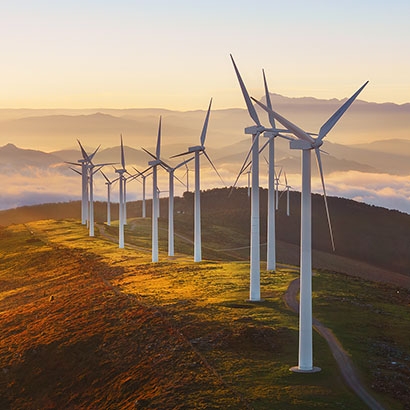The yield curve has inverted—meaning short-term interest rates moved higher than long-term rates—and could stay inverted through 2022. Here's what it means and why it may be less worrisome than in the past.
For most investors, most of the time, overall interest rates matter more than the so-called yield curve, which is the difference between yields for similar bonds with different maturities.
On rare occasions, however, this key economic indicator does something that causes real concern—it inverts. In other words, the yields investors earn on short-term bonds surpass those of long-term bonds.
Recently, yields for 2-year Treasuries moved higher than those of 10-year Treasuries, or what economists call a “2s10s” curve inversion. Morgan Stanley strategists think the 2s10s curve will invert further and sustain that inversion throughout the remainder of the year.
Historically, this has signaled an imminent recession. This time around, however, the inversion has more do with near-zero interest rates and strong demand for long-term Treasuries than the health of the economy.
“Overall, the yield curve has become less of a recession indicator over the last two economic cycles,” says U.S. Chief Economist Ellen Zentner. “And when we look at factors in the economy that are typically signals of a recession, such as job growth, retail sales, real disposable income and industrial production, we don’t see an approaching recession.”
Here are the key things to know about what’s behind Morgan Stanley’s outlook around yield-curve inversion and how investors should think about it in the context of their own finances.
Curves Offer Clues About the Future
All things being equal, bonds with longer maturities typically need to pay higher interest rates to compensate investors for the additional risks that come with owning these fixed-income assets over time.
When a yield curve is normal, it slopes upward; the longer a bond’s maturity, the higher its yield. So, when a yield curve inverts, it’s notable. In the past, this has been a strong indication that investors collectively see more risk in the immediate future than down the road.
However, the last two economic cycles have been anything but typical. “In reality, yield curves flatten for a multitude of reasons, most of which aren't a reflection of investor views about slowing growth,” says Matthew Hornbach, Global Head of Macro Strategy for Morgan Stanley.
As in past cycles, expectations of higher rates can result in an inverted curve.
This Economic Cycle is Unique
Yield curves are shaped by both short-term and long-term dynamics—and in this case multiple factors are pushing short-term rates higher while having less of an impact on longer-term rates.
In 2020, the Federal Reserve cut its policy rate—what it charges banks to borrow money overnight—to near zero to minimize the impact of the COVID-19 recession. Fast forward to today and the Fed needs to play “catch up” to counter rapid inflation. Morgan Stanley economists are forecasting that the Fed will front-load policy rate increases with a 2.875% rate by the end of 2022, with the possibility of a 75 basis point hike, which would push the end-of-year rate to 3.125%.
Fed rate hikes usually nudge interest rates for other bonds higher, but the effect isn’t always linear—and right now short-term bond yields are increasing while yields for longer-term bonds have barely budged. The reason: Strong global demand for U.S. Treasuries, as well as the U.S. government’s own bond buying (i.e., quantitative easing), translates to pricing power for these bonds and, consequently, relatively low yields.
The Upshot: Key Things to Know
As we watch what happens to the yield curve, keep three things in mind:
- Higher rates don’t always mean recession. The Fed is raising interest rates to combat inflation and keep the economy from overheating. While markets often have a knee-jerk reaction to higher interest rates, many times the Fed has raised rates without triggering a recession. And even if a recession were in the cards, it’s unlikely to happen in the immediate future. “Historically, inverted 2s10s yield curves preceded recessions by almost two years, on average,” says Hornbach. “Two years is plenty of time for people to prepare for harder times ahead.”
- Banks won’t stop lending. When the curve flattens or inverts, some market watchers worry that banks will stop lending. In fact, Morgan Stanley research shows that bank loans grew during the prior 11 periods of yield curve inversion since 1969. And this year, they project loans will grow 7% year over year. Likewise, yield curve inversions are not a death knell for corporate credit. “In the absence of growth headwinds from geopolitical events, curve inversion alone would not be a cause of concern for corporate credit, given healthy balance sheet fundamentals,” says Hornbach.
- The current cycle will be “hotter and shorter.” Inverted yield curves are consistent with a “hotter and shorter” economic cycle. “Developments over the past year support this call—U.S. gross domestic product and earnings have surged past prior cycle peaks and are now decelerating sharply from a growth standpoint, inflation is running at a 40-year high and the Fed has executed arguably the sharpest pivot in policy we've ever witnessed,” says Chief Investment Officer Mike Wilson. He continues to favor defensive sectors and companies with high and durable free cash flow generation.
For more Morgan Stanley Research on yield curve inversion, ask your Morgan Stanley representative or Financial Advisor for the full report, “Living with Yield Curve Inversion” (March 17, 2022). Plus, more Ideas from Morgan Stanley's thought leaders.



